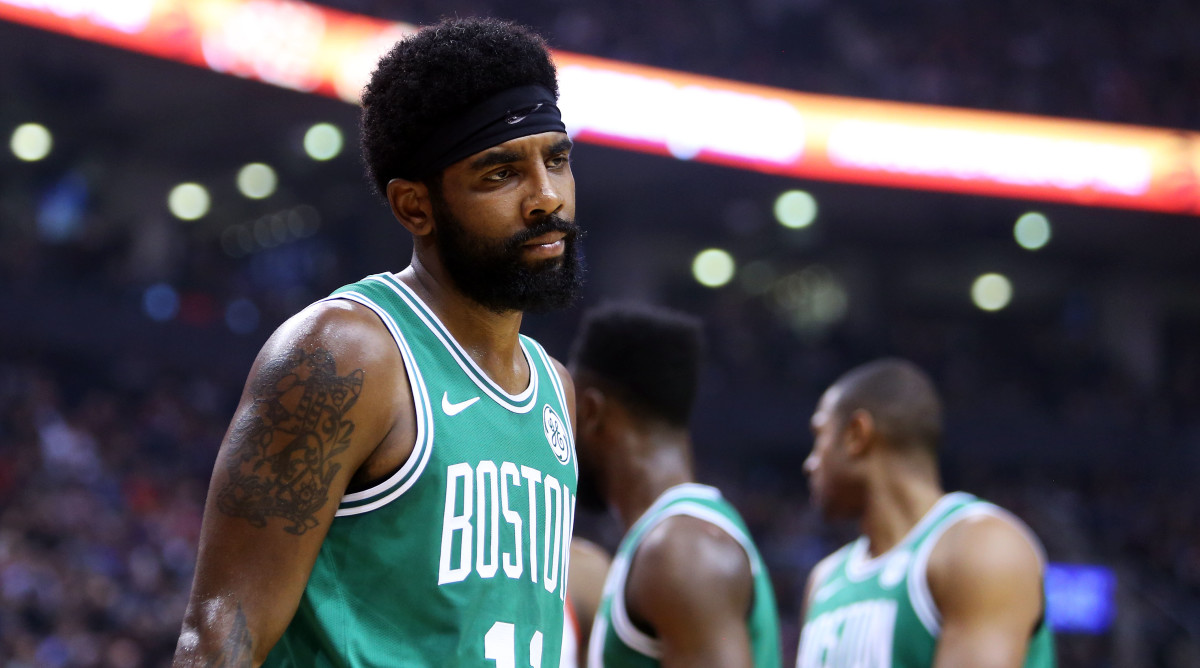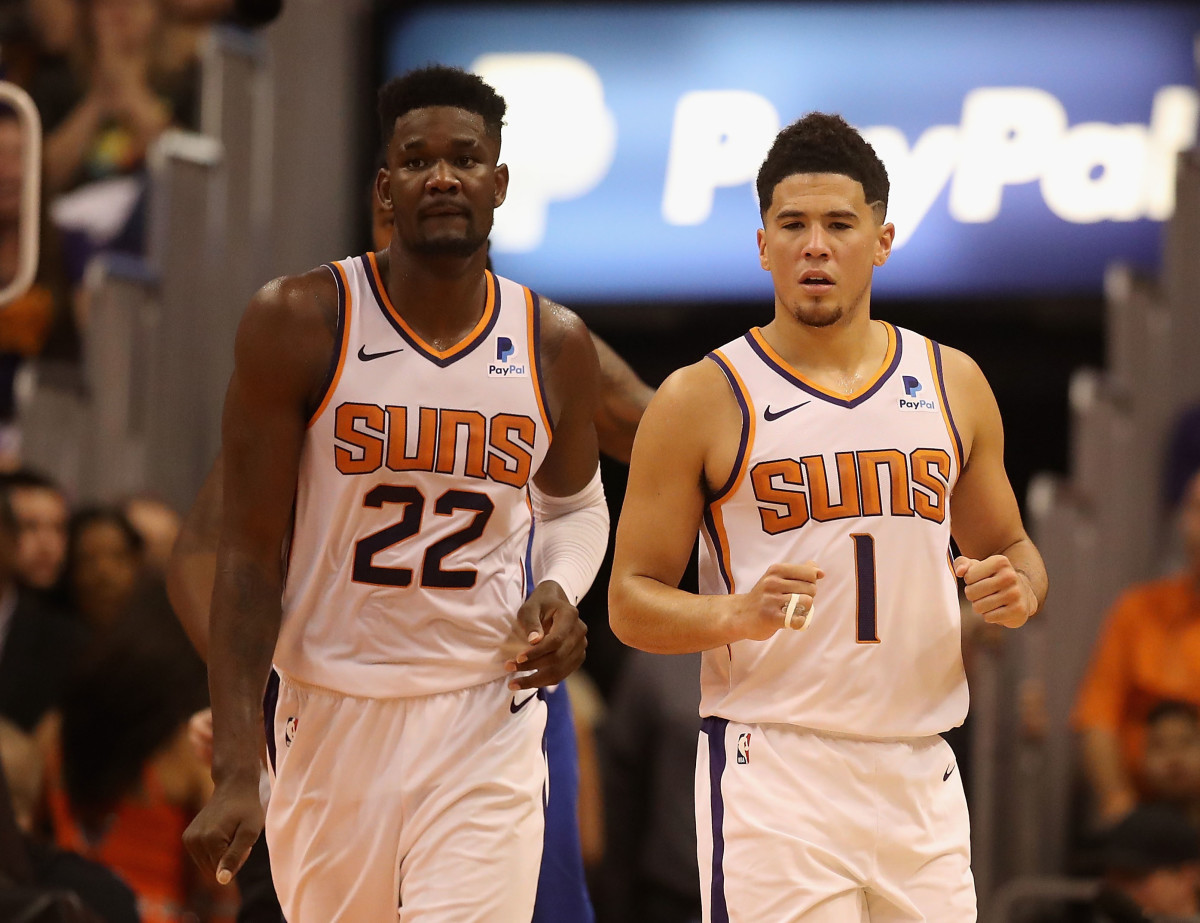Seven Barely-Baked Theories on the NBA's Opening Week

The NBA is back, and in just six days has given us a spittle-fueled fight, the start of a wide-open MVP race, the full-fledged return of a missing superstar, a bonafide trade saga, and an early contender for Game of the Year.
It’s early yet, but not too early to take a lay of the land to gauge what trends might stick and which returns might prove misleading. Here, as we enter Week Two of the NBA season, are a few premature, barely-baked, early-season theories:

The Celtics might need months to get their offense in order.Boston is loaded with talent but saddled with all sorts of complicated dynamics. Kyrie Irving, who led the team in shot attempts last season, is working his way back into the mix after missing the 2018 playoffs with a knee injury. Jayson Tatum, whose flourishing in Irving’s absence helped propel the Celtics to the Eastern Conference finals, has to recalibrate his game while still making an impact—all while adjusting to his second year in the league.
Boston as a whole has to figure out the ideal role and utility for Gordon Hayward, who played all of five minutes last season before suffering a devastating leg injury. Follow the trickle-down of shots and possessions and you’ll find Jaylen Brown trying to pick his spots and Terry Rozier—who was so vital in the playoffs precisely because he was so unflinching—making do with less. Every player is effectively in a new, reshaped role, and Al Horford is in the middle of it all, modulating the offense from one frequency to the next. This team has all the makings of a powerhouse, but first they need time.
The league-wide surge in scoring and pace will last.Teams won’t be able to play quite this fast (the average pace thus far is 102.1 possessions, per Basketball-Reference, up nearly five from last year) or score quite this much (113.3 points per game, up seven points), but I have a sneaking suspicion that the broader trend will hold. Expect the most free-flowing product yet. Teams will eventually adjust to the NBA’s newly clarified “freedom of movement” rules to the point that they foul less, but in doing so will still allow more fluid cutting and passing as a result.
LeBron's Lakers Left to Pick Up the Pieces After Ugly Rondo-CP3 Brawl
This could be a breaking point; the NBA has been skewing smaller and quicker for years, and now those smaller, quicker players will be able to navigate the floor without being held up at every turn. One counter-trend worth watching: As it gets more difficult for defenses to successfully track movement away from the ball, teams could lean even harder into switching schemes as a means of survival.
Indiana has a case as the third-best team in the East.The Pacers were one of the great unknowns heading into this season, in the way that all young, breakout teams anchored by young, breakout stars tend to be. If Indiana’s unusually high play-to-play effort level dipped at all this time around, its performance would likely stall. If opponents caught on to some critical element of Victor Oladipo’s play over a year’s worth of film, the Pacers wouldn’t likely have the dynamism to compensate.
At first blush, neither seems to be the case. Indiana bounced into the season ready to pressure the ball and push the break, getting the best even of teams who knew what to expect. That could change; Indiana’s first two wins, after all, came against Memphis and Brooklyn, which amounts to fairly gentle scheduling. The real tests await. Between the established continuity and the early fit of newcomers Tyreke Evans and Doug McDermott, the Pacers could climb to the top of the East’s second tier.

The stylistic changes in Phoenix’s offense—while exaggerated—seem real.What a pleasant surprise the pass-happy Suns have been, considering that the most notable developments in their offseason included drafting a score-first big man, not signing anything resembling a point guard, and then canning their general manager just prior to the season. Credit Igor Kokoškov, who in the first weeks of his first season as an NBA head coach has already meaningfully changed the way his team plays. “Last year was more stagnant,” said Suns forward T.J. Warren, per the Arizona Republic. “A lot of ball-dominant pick and rolls.”
This year’s offense, by contrast, more closely resembles the “blender” that Kokoškov helped orchestrate in Utah. So far, the Suns have assisted on more of their made baskets (75.3%, according to NBA.com) than any other team in the league—a dramatic turn for a team that ranked 27th by that metric last season. The cascade of one pass leading into another makes for some genuinely beautiful basketball, all, apparently, with no true point guard required.
Giannis Antetokounmpo might lead the league in usage for the first time in his career.Antetokounmpo has never gorged on possessions at the level of James Harden or Russell Westbrook, but he might well for the Bucks this season. Milwaukee, at long last, is running an offense that suits him—a modern, well-spaced attack that adapts by read as it goes. With that transition comes turnovers. Antetokounmpo may not be making more passes by count this season, but he is making more meaningful passes with more moving parts involved. Through two games, he’s already committed a league-high 14 turnovers, each subtly inflating his overall usage. That number will recede some as Antetokounmpo finds his footing, but don’t expect the same for his hike in field goal attempts.
It will be easier than ever for Antetokounmpo to get up shots this season, if only because he won’t have to dribble the ball for 12 seconds to make them possible. Bucks coach Mike Budenholzer wants Antetokounmpo taking more threes, and he has—more than doubling his average attempts to five per game. The offense is designed to get Antetokounmpo making more of his catches on the move, and from that comes more opportunity to exploit off-balance defenders. The Year of Giannis is just beginning, and if these first two games are any indication, it promises to be absolutely marvelous.
Charlotte looks like a playoff team.The back of the Eastern Conference playoff picture is wide open, giving hope for teams like Charlotte, Detroit, Miami, and if you’re feeling charitable, longer shots like Brooklyn or Orlando. The start of the season has been a strong opening statement for the Hornets, who beat two of their would-be rivals (the Heat and Magic) and lost to the Bucks by a single point.
NBA Power Rankings: Raptors Top List After Impressive Opening Week
Kemba Walker looks effectively unstoppable, and has cranked up his three-point shooting to Curryian levels of volume and proficiency. The lineups around him have been more consistently spaced and more flexible defensively, both of which may have something to do with ditching Dwight Howard. Most of the Hornets’ usual limitations still apply, but a healthy Cody Zeller, a more comfortable Malik Monk, and a dash of Miles Bridges manages to give the roster a slightly different seasoning.
Dante Exum could be a real, night-to-night difference maker.With any luck, we’ll finally get a glimpse this season of what a healthy Exum could be. The former No. 5 overall pick has battled through the indecisiveness common to teenage pros and the injury history of a player far beyond his years. Already Exum, now entering his fifth NBA tour with the Jazz, has lost roughly two full seasons to tough breaks. Hopefully, the worst of it is behind him.
NBA Opening Week: LeBron James' Lakers Debut and More First Impressions
Exum’s on-court presence is tantalizing. If some stirring play comes when Exum is on the floor for Utah, there’s a good chance he had a hand in it—a deflection that led to a fast break, a cut to release pressure on the offense at the perfect time, or a smothering rotation to keep a defensive stand alive. Two games are not any meaningful sample, but they do, in Exum’s case, offer some small measure of encouragement. If Exum can be the kind of player he was against the Warriors and Kings on most nights, Utah will have yet another way forward through its own internal development.
